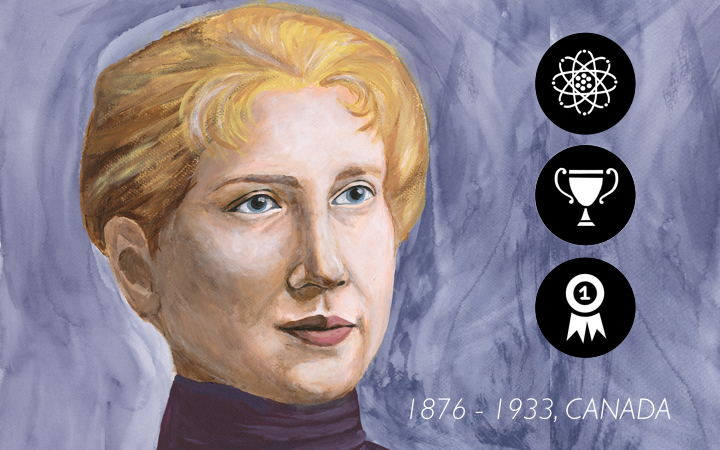Harriet Brooks (July 2, 1876 – April 17, 1933) was the first Canadian female nuclear physicist. She is most famous for her research on nuclear transmutations and radioactivity. Ernest Rutherford, who guided her graduate work, regarded her as being next to Marie Curie in the calibre of her aptitude.[1] She was among the first persons to discover radon and to try to determine its atomic mass.[1]
Harriet Brooks was born in Exeter, Ontario, in 1876 and she graduated with a bachelor of arts degree in mathematics and natural philosophy from McGill University in 1898.[2]
Brooks was the first graduate student in Canada of Sir Ernest Rutherford (then a professor at McGill University), under whom she worked immediately after graduating.[3] With Rutherford, she worked on electricity and magnetism for her master’s degree in 1901. She was the first woman at McGill to receive a master’s degree.[4] Following her master’s degree, she was a fellow at Bryn Mawr College, and then she took a fellowship at the University of Cambridge. [5]
After her master’s degree under Rutherford, she also did a series of experiments to determine the nature of the radioactive emissions from thorium. These experiments served as one of the foundations for the development of nuclear science.
For a short period, Brooks also worked under the supervision of Marie Curie.[6]
In 1904, Brooks was appointed to the faculty of Barnard College in New York City, and in 1907 she married Frank Pitcher and then left the field of physics.[1]
The obituary of Harriet Brooks was published by the New York Times on April 18, 1933, recording that she had died the previous day in Montreal at the age of 57, crediting her as the “Discoverer of the Recoil of a Radioactive Atom.”[6] Brooks is considered one of the leading women of her time in the field of nuclear physics, second only to Marie Curie. She is a member of the Canadian Science and Engineering Hall of Fame.[7]
(From Wikipedia, March 2018)


